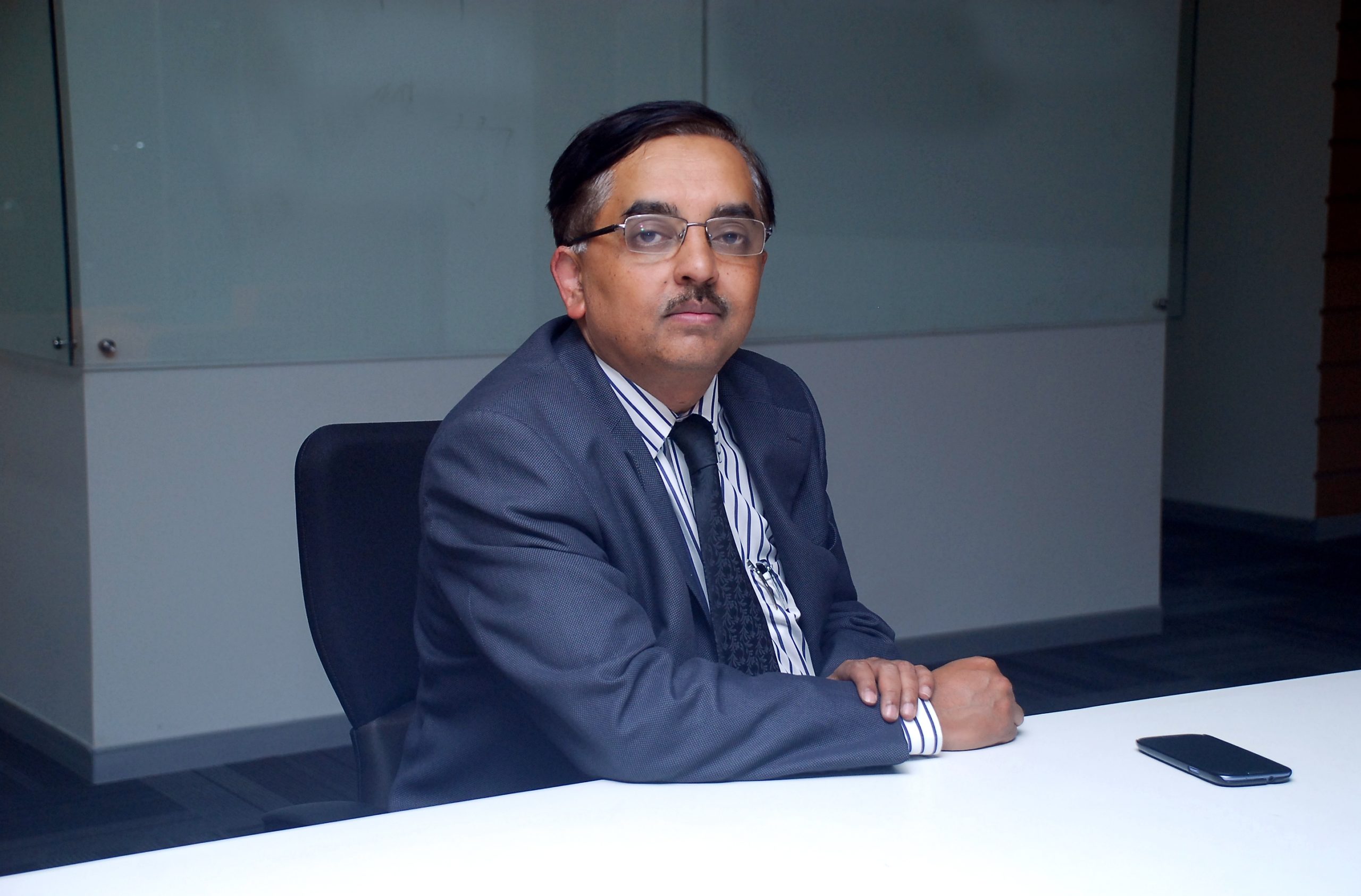
If a recent statistic is to be believed, the ability to provide applications with predictable, high performance in less physical space has led IDC to forecast a 46 per cent compound annual growth rate for all-flash arrays over the next five years. Keeping this rate of growth in mind, HP recently announced some new innovations in their storage products portfolio. The innovations are made in the HP 3PAR StoreServ Storage family, including 25 per cent lower cost flash capacity, a new class of massively scalable flash arrays, and flash-optimised data services to accelerate IT-as-a-Service consolidation and hybrid IT initiatives.
HP also introduced flash-optimised software for end-to-end availability and non-disruptive workload balancing across the data centre. These capabilities are built on an already strong set of tier-1 data services unmatched by competitive all-flash arrays.
With this launch, HP re-established its faith in flash storage. On the sidelines of the event launch, Diksha P. Gupta from Open Source For You caught up with Barun Lala, director, storage, HP India, and discussed the ever-evolving storage industry. So, if you are an IT head looking to understand the current storage paradigm, read on…
Q. What are the advantages that a customer gets with flash storage?
The first and the most important advantage of flash storage is the scalability that a customer gets. So, for example, in case there is a bomb blast in a certain city, people would want to read about it immediately on their mobile devices. Suppose a website www.xyz.com gets huge traffic but is unable to scale itself in time, the next time users will switch to another website. With flash storage, scalability at any point of time, to a great extent, is not an issue.
The end-customer experience is wonderful with flash storage. For instance, if you are making a transaction from your mobile phone, you will not have patience to hang on to it. Rather, you would want to get over it in a flash. If you compare two different banks that have the same application, where one of them is running on a flash based platform and takes three seconds, while the other one, which doesn’t have flash architecture and takes 12 seconds, do you think you will ever go for a transaction with the latter? With respect to your banking transaction, it is the end of the road for that bank, where response time was higher. Thus, flash storage definitely improves customer experience. From the customer’s investment point of view, flash is all about saving on the power, energy and data centre footprint. We have real examples where customers have actually achieved saving on data centre footprint by almost three times and saving on the power by almost seven times, by using flash . So, these are the compelling reasons why I feel flash is becoming increasingly popular.
Q. Assume that a CIO has already invested his CAPEX in a storage solution provided by you. How can we leverage the best features of this storage solution after he has already made an investment?
Being the storage head of HP India, I get information about the upcoming products at least three to four months prior to its launch. But even though I know everything, I cannot share anything with any customer till the date of launch of the product. It’s a policy related matter. Even if I want to quote any information to a customer before the official launch date, I will have to take special permissions. But in special cases, with enterprise customers, with whom we have very large infrastructure deployments, we sign a NDA with them and share the specifications of the upcoming products. This is to ensure that they can populate this information when they come up with their requirements. But this is done on a case to case basis and not on a mass level. For clients who have been with HP for a long time, like a period of 10 years or so, any upgradation is called technology refresh. For other clients, as per our ’embedded lease’ offering, I will have to replace the old infrastructure and also, will have to take responsibility of migrating that architecture from the old storage architecture to the new storage architecture.
Q. What are the current challenges and trends in the storage industry?
Any customer who moves from a hybrid landscape or a spinning landscape, to flash, needs to get ready for that first. He needs to train his resources in terms of how to utilise flash in an optimised manner, because it is very critical for him to understand to ensure that flash is properly used. If flash is not properly used, or it is left under-utilised, then he can actually end up paying more for doing less work. So, he should be sensitive to that aspect and gear up the organisation in terms of flash usage.
So, when we are selling these, all-flash array solutions to the customers, we are typically bundling three days of training to customers on usage of flash architecture, because we feel that is an important aspect, as it is a mega transition in terms of adoption.
When we talk about the trends that are picking up in the storage industry, Software Defined Storage is definitely one of them. All-Flash array is another trend that is picking up strongly. The third most important trend is disk to disk backup instead of tape.
Q. How have things changed for the storage industry in the past one year, particularly with Software Defined Infrastructure coming in?
Software Defined Storage is a very small segment in India right now, but there is no doubt that it will continue to grow. But if you ask whether it will reach the double digit growth in India in the near future, my answer is ‘no’. However, we cannot deny the fact that it is very cost effective and extremely easy to deploy. We have easily deployed our SDS on a network within hours. With all these factors, SDS is poised to grow. But if customers are looking for performance, then they need to look at flash based architectures.
Q. How is software defined storage faring in the current computing scenario?
Let me begin answering this question with a small example of software defined storage. Software Defined Storage is a performance based solution. If a customer is looking at the lowest cost with fastest deployment, they should look at SDS. Let’s take the example of a small company which has 10 branches. The IT head of the company has got 10 servers and in each of the servers, he has 300 X 2 GB of disk space. Assuming that location #3 has run out of disk space and his requirement is 700 GB, he will have to buy the additional 100 GB of space. In case of software defined storage deployment, he will deploy a license on the headquarter server and appellate on the remaining nine servers. While deploying SDS, the IT head of this organisation can see the status of all 6000 GB space, and will not need to spend a single penny till he has space allocated to any of his locations, allowing him to use the excess storage space of other locations in location #3. So, it goes back to the philosophy of converged infrastructure, where I am able to get better optimisation because of SDS license. In a nutshell, with SDS, the resources of all attached devices can be converted into a resource pool. And an IT head can get full view of that storage, which will eventually prove very cost effective option. It may not give you performance, but will give you optimisation and efficiency.
Q. Where does open source technology fit in the storage world?
OpenStack is an important project for HP and will continue to be the same in the future as well. A lot of the other storage members are now joining the OpenStack platform. Essentially, if you are talking about the SDS, ideally you would like as open an architecture as possible, because what happens is, once you introduce SDS, you are actually bringing in one level of complexity within the data centre. So, if SDS is not made as flexible and open as possible, you will be able to explore SDS as an architecture only in a limited manner. Even if you have hardware based efficient platforms, you will still be governed by SDS, as it will lie as the top layer. Possibly, that is why OpenStack needs to be in-built in your date centre. So, open source technology is a must in the world of storage.
Q. Out of 10, how many CIOs, do you see adaptive to open source technology?
In India, that number is pretty less. Out of India, four or five out of 10 CIOs are willing to adopt open source, but in India, this number comes down to one or two.
Q. What are inhibitions that you see?
Most of them are still stuck to an old generation thinking. And they do not want to change so radically. SDS, flash architecture, et al, is nothing but a radical change for them. Indians are not adaptive to leading edge technologies like these. A lot of CIOs are apprehensive about such technologies. You may find it hard to believe, but a lot of CIOs are still apprehensive about cloud. They tend to think that with cloud, the power control may slip off their hands. I believe that CIOs should be progressive in embracing the change.
Q. So, how is the storage space evolving in India?
I see flash adoption being really high. I think customers are thinking far more pro-actively and their knowledge of storage is way higher, than what it used to be three years back. I can quote an incidence about a customer in Ahmedabad. The customer said that storage is the heart of his data centre. Customers now feel that storage has become much more important to them than possibly changing their server landscape.
Q. So, how are the IT heads dealing with the spurt of data that we are seeing with trends like Big Data, Mobility, Social Media and Cloud?
I think they have learned how to deal with it. As an IT head, I may not know if my server will have one million hits today and 10 million hits tomorrow. All I know is that I need to have an infrastructure which can give seamless response to the customers, even in the situation where the traffic is ten times the usasul. It is becoming increasingly important for IT heads for they need to be prepared for unprecedented data growth and unprecedented access to a particular network. If they are not ready to deal with unprecedented traffic, the system will just hang, leading to a loss of customer.












































































